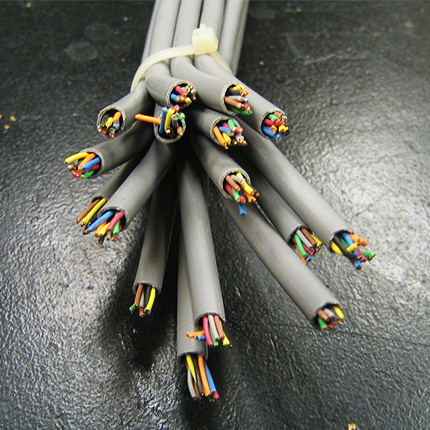I’ve been distrohopping for a while now, and eventually I landed on Arch. Part of the reason I have stuck with it is I think I had a balanced introduction, since I was exposed to both praise and criticism. We often discuss our favorite distros, but I think it’s equally important to talk about the ones that didn’t quite hit the mark for us because it can be very helpful.
So, I’d like to ask: What is your least favorite Linux distribution and why? Please remember, this is not about bashing or belittling any specific distribution. The aim is to have a constructive discussion where we can learn about each other’s experiences.
My personal least favorite is probably Manjaro.
Consider:
- What specific features/lack thereof made it less appealing?
- Did you face any specific challenges?
- How was your experience with the community?
- If given a chance, what improvements would you suggest?
Ubuntu. They’ve managed the worst of both worlds: like Debian, everything is old (though admittedly not as old), but unlike Debian, everything is broken/buggy/flakey. It’s the old-and-busted distro that I’m routinely told is “the only Linux we support”.
If Debian is not great as a desktop distro, it’s at the very least remarkably stable as a server distro. The sentiment extends somewhat to Ubuntu LTS. It could be better, but in terms of uptime and just working I can’t fault either distro.
Debian is a great desktop distro if you get your software using Flatpak, as anyone should be doing in every distro.
Whats wrong with apt?
Nothing at all, the main issue is that with graphical applications developers have an hard time to package things for all the useless distros out there and some other distros like Debian on stable will only haver older versions of software. Flatpak solves both of this issues.
Currently using Bookworm and KDE as my desktop right now. Works really well! If I need more up to date software I use Distrobox and run whatever distro’s version of software I want. I have both Debian Sid and Arch Firefox versions installed on my machine right now just to see if it worked and it’s flawless. I mostly just run apps from SID container and it exposed the app to my desktop wonderfully. Really the only way I will fly these days.
deleted by creator
Also, support is only provided for 18.04LTS.
I was an Ubuntu fan many moons ago. Then I fell in love with Mint when it was just all around a better version of Ubuntu.
Then I ended up with a new Windows laptop for years and forgot about Linux entirely. But this year, I’ve actually returned to Ubuntu. I like how it has a fresh and different look and it still performs well on my now aging laptop. Mint is always my go to recommendation to others, but I just wanted a different look than your standard Windows-like look that Cinnamon has. I was initially turned off way back when, when Ubuntu switched to Unity, but now a difference in look appeals to me. We’ll see if I get annoyed with Snaps or not. So far, everything has been running smoothly.
If there was a GNOME fork of Mint, I’d likely be using that. I get that you can technically install whatever desktop environment in whatever distro you want, but for compatibility sake, it’s best to roll with what your distro comes with.
I’m about to piss off a lot of people.
It’s Arch and Arch-derivatives. And I’m saying it as an Arch user, btw, and I actually love it.
Between the Big Three (Fedora, Debian, Arch), it is the least likely to have an official package for somewhat niche applications. If something is not available as a flatpak or appimage, I have to compile it from source or an AUR PKGBUILD, but we all know the dangers of doing that. Some software will just assume that it’s running on a particular disribution, usually Ubuntu. Some software will detect the distribution and straight-up refuse to work on Arch.
That being said, it would take a lot to make me switch to a stable point-release distribution. Arch’s advantages more than make up for the sub-par software support.
(actually, I lied. Fuck Canonical and *Ubuntu. And IBM.)
Just use Distrobox my friend.
I use it on Fedora Atomic (Silverblue) and I install Arch- and AUR-software all the time.
In that way I can access everything I want and still enjoy the comfort of my unbreakable base.
Another plus is that if I should break my Arch container, I can just remove and reinstall it without affecting my host. The performance is about the same as with Flatpaks, so, negabile.If you like Arch, then just use Ubuntu/ Debian/ Fedora/ whatever as container image and never stress yourself anymore with PKGBUILD
This is a balanced take in my opinion. Also an Arch user. Distrobox has helped remedy things somewhat.
My least favourites are probably ubuntu and manjaro, not so much because of the distros themselves but the organizations behind them being a bit dodge.
I know it’s probably an odd choice, but ChromeOS. It has the potential to be not just a good starting point for new Linux users but also a distro that could allow Linux to be a lot more accessible to people who aren’t as technologically capable. The main problem is that, similar to android, Google prevents ChromeOS from being used as a proper Linux distro. Right now, it might be a good alternative to Windows and MacOS but as a Linux distro, it’s just not worth using. Especially considering that Linux already has some options available for running android apps, such as Waydroid, that work pretty well.
Ubuntu because they’ve the ability to great things and end up just delivering a buggy and mangled version of Debian with proprietary crap, spyware, snaps wtv. After all we’re talking about the distro that had ISOs on their download page with a broken installer multiple times.
I don’t hate them, but this hits hard. They are THE most influential distro for people outside of the community. They have by far the biggest user base and community, but instead of using this to collaborate with other distributions and specially with the freedesktop folks for the improvement of the commons, they have this culture of downstream work that rarely get the effort needed to be upstreamed. It’s usually “it’s good enough for us, so that’s where we’ll leave it”, and they end up with these weird solutions that only they use.
It’s usually “it’s good enough for us, so that’s where we’ll leave it”, and they end up with these weird solutions that only they use.
Exactly. And to make things even worse then you’ve people upstream (Debian) or sidestream (other distros) that eventually decide to implement whatever they did but properly and then they go there, pick it and replace their original implementation.
Not a whole lot of experience distro-hopping here (went from Ubuntu to Endeavour and haven’t really changed since) but from what I know it seems like most distros have their place. Arch is highly customisable and all rolling release distros are good for gamers and those who need the latest software. Debian, Ubuntu, Mint, and other LTS distros are good for servers and newcomers (fewer big updates and therefore fewer potential crises)
For the sake of answering the question, I’d say Ubuntu is my least favourite. Its pretty bloated, and then there’s the whole snap fiasco
Ubuntu: For shilling all kinds of profrietary garbage by default. If I wanted that I’d be on Windows.
Also the changes they make to GNOME make it worse, they take away what makes it good, the flow.
Exactly what I came here to say.
Prompt me for Ubuntu Pro once (in the GUI on first login)? Shame on you, but I’ll move past it.
Put an ad in the terminal every time I update my system though? Straight to jail.
NIXOS. It has a very steep learning curve without acceptable documentation and once I climbed the learning curve, I realized that it was very different from the Linux that I love.
I hope you dont give up on it for too long, I think it’s a great OS once you get the hang of nix. To this day, its the only OS I trust where I could install anything I want and can still rollback without worries. Also I can make sure that my installation is the same as others, which means other people can literally just copy paste my config to test.
I don’t think I’ve ever used Ubuntu for more than a month. I just don’t like the way it looks, how locked down everything is, and how hard it is to customize.
Someone already said Manjaro, so my second pick would be ElementaryOS. In the past they’ve had this weird attitude about open source things being free (I get supporting devs for projects you like of course, but I don’t agree that it’s “cheating” to not pay for every single piece of open source software you use), and they seem to get a lot of hype and praise for what’s essentially just Ubuntu painted up to look like MacOS IMO.
I always confuse it with Sugar
I use Fedora as my primary desktop distro. It’s a sturdy base with relatively up-to-date packages from the repos. It doesn’t really push technology I consider undesirable, like Snaps. Even though I have to rely on RPMFusion for a number of proprietary parts, due to Fedora’s free software stance, I don’t have any particular qualms about that. I also increasingly use Flatpaks anyway.
When I used to use Reddit the /r/fedora community was helpful and welcoming.
One downside is because the kernel changes frequently, and I (sadly) own a Nvidia GPU, akmods runs very often. Another downside is sometimes that frequently changing kernel can cause issues. I think in the past year or two I’ve had two distinct occasions where a kernel upgrade caused my mounted shares to not mount correctly. Reporting an issue to upstream also takes quite some involvement, as I discovered when I had to create some Red Hat account to report an issue about the packaging of some software in a beta release of Fedora.
So all-in-all I would say Fedora is a strong distro. It is probably not the most beginner-friendly one, though, given how you have to dip your toes into RPMFusion and related challenges. It used to be worse, since DejaVu used to be the default font system-wide and you had to install a fonts package from COPR to make the system actually look pleasant. Since then they switched to Noto, which makes the font situation MUCH better.
On servers and VMs I use Debian because I do not have the patience to maintain a faster moving Fedora multiple times over. This is exacerbated by the awful defaults of Gnome, which I have to bend into shape with extensions. When Fedora 40 releases later this year I fully intend to reinstall from scratch since KDE Plasma 6 will be available.
edit: i misread the prompt and just talked about my favorite distro that i actively use. whoops.
My least favorite distro could be Manjaro if I actually used it, but it is Ubuntu because of how close it is to being a great distro. Snaps really soured me to that deal. Snapd and Snaps make it difficult to use in VMs, too, because now you have to over-commit resources for something that could and should be smaller and simpler. Debian stays winning, as usual.
Any DE that looks remotely like Windows. My journey to Linux began with a seething hatred of the way Microsoft does pretty much anything. Including the Win10 UI. So when I jumped ship I wanted something completely different. I tried Gnome on a couple distros but ultimately landed on Pop!_OS and really like it!
I agree with this the most. People obsess over the start menu paradigm simply because they like it in Windows. I desire more open mindedness when it comes to looking into alternative ways to interact with your computer, so I align with GNOME.
After spending a ton of time migrating CentOS machines I have to say anything red hat related.
OpenSUSE, awfull default software selection on desktop, and pushing users hard to use an “everything configuration tool”.
I don’t get the hate for Manjaro, TBH. I never had any problem with it, and I used it as my main OS for a few years now.
People dislike it because:
-
There’s no real reason to use it over Arch/EndeavourOS
-
Their holding back of updates for 2 weeks is stupid and can cause breakage/dependency issues when you also have stuff installed via AUR (which doesn’t get held back for 2 weeks)
-
They hold back packages for 2 weeks, citing stability and that they can check for issues then patch before they push, but then they just… don’t do that. Known issues still get pushed.
-
Manjaro repos have had issues with malware in the past
-
Manjaro has on multiple occasions had their SSL certificates expire, with their advertised “fix” being to roll your system time back. This is a job that can be automated, or at the very least should have a reminder for someone in Manjaro to sort out. The fact it happened once is an embarrassment, but the fact it’s happened more times is absolutely inexcusable.
Once, I listened what some people said on the Internet, and I tried Arch. I came back to Manjaro, but I learned a lot so I’m not unhappy with the experience.
However, to say that there’s no reason to use it over Arch (I don’t know about Endeavour, I never actually used it) is just wrong. Maybe you don’t like the differences, but they are important and useful for someone like me. When I installed Arch, I needed to tinker it for hours before having something usable. I don’t want to tinker, I want my OS to work, even if it means other people made choices for me, as long as I can revert them; that’s what Manjaro offers. For example, I love GNOME, but only with some plugins, like dash to dock. When I installed Arch, GNOME made an update which broke a lot of plugins, included dash to dock; while Manjaro waited for dash to dock to work to push the new GNOME. Some issues may be pushed, but a lot of others aren’t. I prefer to have one big update twice a month instead of having to update and tinker again my OS possibly every day.
Manjaro is far from perfect, no distro is, but for people like me, it works very well, and better than Arch.
-
It’s fine. People like to shit on it, usually people that have never even tried it.
I’ve run it for years on many systems and had no issues, which I can’t say with most other distros I’ve tried on and off.














